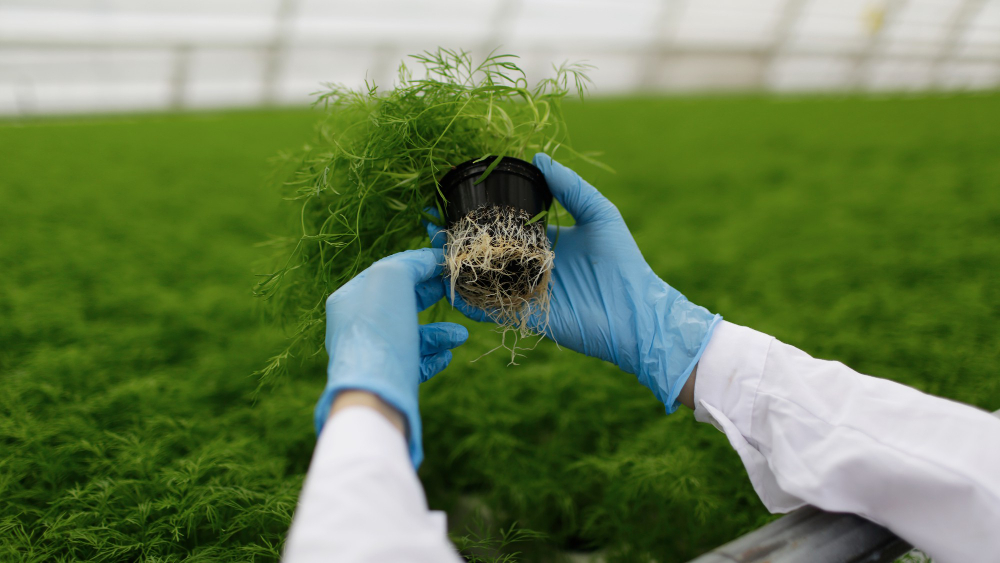The Role of Potash Mobilizers in Boosting Crop Yields

Potassium is a fundamental nutrient essential for plant growth, influencing processes such as water regulation, enzyme activation, and stress tolerance. Despite its importance, potassium in soil is often found in forms that are not easily accessible to plants. Potash mobilizers are innovative tools designed to enhance the availability of potassium, thereby boosting crop yields. This article explores the role of potash mobilizers in improving crop productivity and their impact on modern agriculture.
1. Importance of Potassium in Agriculture
1.1. Functions of Potassium
Potassium plays several crucial roles in plant health and productivity:
- Water Regulation: Helps maintain water balance within plant cells, improving drought resistance.
- Enzyme Activation: Activates enzymes involved in photosynthesis, protein synthesis, and carbohydrate metabolism.
- Stress Tolerance: Enhances plant resistance to diseases and environmental stressors.
1.2. Challenges in Potassium Availability
Potassium in soil can be present in forms that are not readily available to plants:
- Fixed Potassium: Potassium that is tightly bound to soil particles and not easily accessible.
- Leaching: Potassium can be lost from the soil due to water movement, reducing its availability for crops.
2. Types of Potash Mobilizers
2.1. Microbial Potash Mobilizers
Microbial potash mobilizers utilize beneficial microorganisms to enhance potassium availability.
- Types: Include bacteria and fungi that solubilize potassium from soil minerals.
- Mechanism: Microbes produce organic acids and enzymes that dissolve potassium-bearing minerals, making potassium more available to plants.
2.1.1. Benefits
- Increased Potassium Availability: Improves the amount of potassium that can be absorbed by plants.
- Enhanced Growth: Promotes better plant health and higher yields.
2.2. Chelating Agents
Chelating agents are compounds that bind with potassium ions, preventing them from forming insoluble complexes.
- Types: Include natural chelates like citric acid and synthetic chelates like EDTA.
- Mechanism: Chelates keep potassium ions in a form that is readily available to plants.
2.2.1. Benefits
- Enhanced Uptake: Increases the efficiency of potassium uptake by plants.
- Reduced Fertilizer Requirements: Lowers the need for excessive potassium fertilizer applications.
2.3. Soil Conditioners
Soil conditioners improve soil properties, enhancing the effectiveness of potash mobilizers.
- Types: Include organic matter, compost, and biochar.
- Mechanism: Improve soil structure, water retention, and microbial activity, which can facilitate better potassium uptake.
2.3.1. Benefits
- Improved Soil Health: Supports more efficient nutrient management.
- Enhanced Fertility: Contributes to higher crop yields and better plant growth.
3. Application Strategies for Boosting Crop Yields
3.1. Soil Application
Soil application involves incorporating potash mobilizers directly into the soil.
- Techniques: Includes broadcasting, banding, or mixing into the soil.
- Benefits: Ensures that mobilizers interact with soil potassium and are available for plant uptake.
3.2. Foliar Application
Foliar application involves spraying potash mobilizers onto plant leaves.
- Techniques: Use diluted solutions applied to the foliage.
- Benefits: Provides a direct supply of nutrients and complements soil applications.
3.3. Integrated Fertilizer Application
Integrated fertilizer application combines potash mobilizers with traditional fertilizers.
- Techniques: Mix potash mobilizers with fertilizers for enhanced effectiveness.
- Benefits: Simplifies application and ensures a steady supply of nutrients.
4. Impact on Crop Yields
4.1. Increased Crop Productivity
Potash mobilizers enhance the availability of potassium, leading to:
- Higher Yields: Improved potassium uptake supports better plant growth and increases crop yields.
- Enhanced Quality: Better potassium nutrition improves fruit size, color, and overall quality.
4.2. Improved Efficiency
Increased efficiency in nutrient use:
- Optimized Fertilizer Use: Potash mobilizers reduce the need for excessive potassium applications, lowering costs and minimizing environmental impact.
- Sustainable Practices: Promotes more sustainable farming by enhancing nutrient use efficiency and reducing waste.
5. Case Studies and Practical Examples
5.1. Success Stories
Case studies highlight the effectiveness of potash mobilizers in various agricultural settings:
- Example: In regions with potassium-deficient soils, the use of microbial potash mobilizers resulted in significant yield increases and improved soil health.
- Outcome: Demonstrated the potential for potash mobilizers to enhance crop productivity and support sustainable agriculture.
5.2. Recommendations for Implementation
Recommendations for using potash mobilizers effectively include:
- Soil Testing: Conduct soil tests to determine potassium levels and select appropriate mobilizers.
- Application Timing: Apply potash mobilizers at optimal growth stages for maximum impact.
- Monitoring: Regularly monitor crop health and adjust applications based on observed results.
Conclusion
Potash mobilizers play a crucial role in boosting crop yields by enhancing the availability of potassium, a key nutrient for plant growth. Through advanced microbial technologies, chelating agents, and soil conditioners, potash mobilizers improve nutrient uptake, promote better plant health, and increase agricultural productivity. By implementing effective application strategies and monitoring practices, farmers can maximize the benefits of potash mobilizers, achieve higher crop yields, and contribute to more sustainable farming practices. Embracing these innovative solutions will be essential for addressing the challenges of modern agriculture and ensuring long-term agricultural success.






